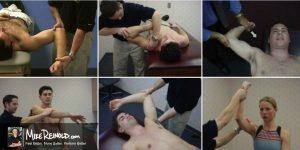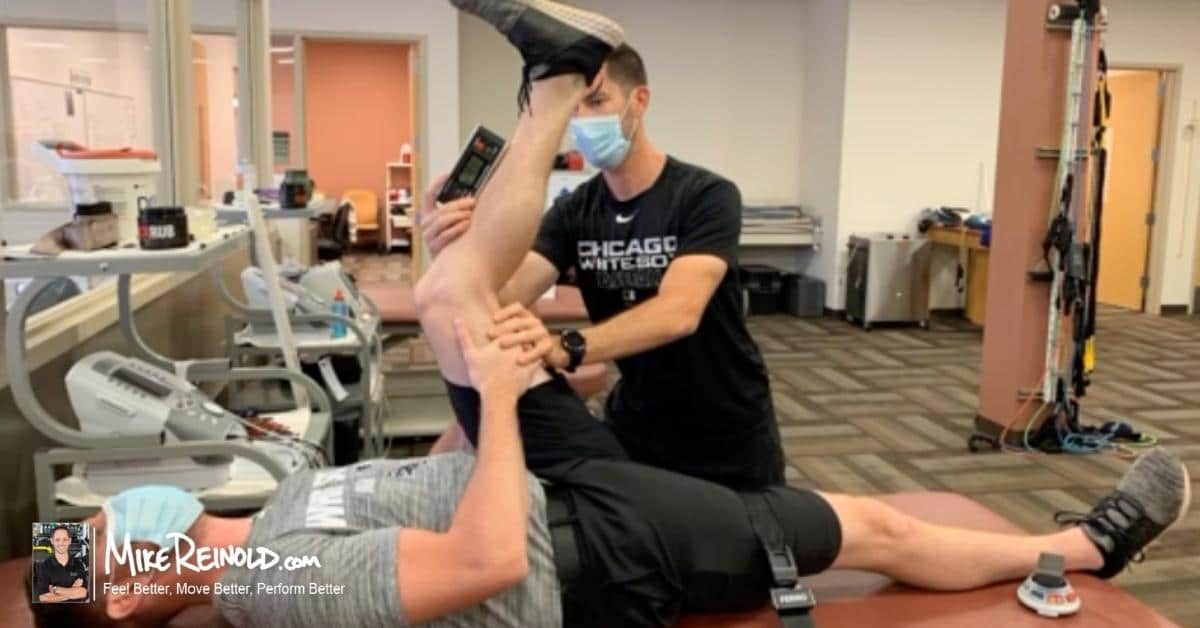There are so many different special tests for superior labral, or SLAP tears, how do you chose which to perform? I have a couple of different ways that I determine which tests to perform, but first, lets see what the evidence has to say regarding all these tests.
Special tests for SLAP tears have come under much scrutiny in recent years as conflicting reports on the accuracy of these tests have been published. What you will find in research reports regarding these tests is that the original citation for each of these tests seem to have extremely high sensitivity, specificity, and negative and positive predictive values. A good example is the active compression test. The original article by O’Brien had shown 100% sensitivity, 98.5% specificity, positive predictive value of 94%, and a negative predictive value of 100%. These are pretty high numbers, so high that they are actually even better than MRI! Since then, no other other author has shown values like this.
This is not isolated to the active compression test, almost every SLAP test described is similar.
Dessaur and Magray reviewed 17 peer-reviewed manuscripts and noted that the majority of papers reporting highly accurate tests for SLAP lesions were of low quality with the results not supported by other researchers. Jones and Galluch agreed and noted that subsequent independent testing of SLAP tests showed much poorer performance that the originally published studies. There are many other research reviews and meta-analysis studies that agree.
An interesting study from Oh et al in AJSM showed that a combination of tests used together may yield the best results. They state that if you combine a couple of tests that have shown to have good sensitivity with a couple of tests that show good specificity, they reached sensitivity and specificity values between 70-95%. This makes sense to me as none of these tests are perfect, think of it as covering your bases with a few tests.
I feel that this may be for multiple reasons.
Different patient populations will present with different mechanisms of injury. In most studies, several variations of SLAP lesions are grouped together to obtain enough statistical power to analyze the data. It is my opinion that different tests will result in different specificity and sensitivity results based on the variation of SLAP lesion present. For example, overhead athletes with a type II or IV posterosuperior peel back SLAP lesion may be more symptomatic during tests that simulate the aggravating position and mechanism of injury, such as the biceps load II, clunk, crank, pain provocation tests, and pronated load test; whereas patients with type I or III SLAP lesions due to a traumatic type of injury may be more symptomatic during tests that provide compression to the labral complex such as the active-compression, compression-rotation and anterior slide tests.
Further investigation on the diagnostic characteristics of these tests based on the type of SLAP lesion is warranted.
- Part 1: Classification of SLAP Lesions
- Part 2: Mechanism of SLAP injuries
- Part 3: Special Tests for SLAP Lesions
- Part 4: How to Choose Which SLAP Test to Perform (You are here)
Choosing Which SLAP Test to Perform During Your Examination
I know it sounds cliché, but first and foremost, your subjective examination should lead your clinical tests. If you patient is a construction worker who fell on an outstretched arm, you probably don’t need to perform any tests that simulate a peel-back lesion. And vice-versa, if your patient is a recreational tennis player with a desk job that only feels pain while serving in tennis, you can probably jump straight to the peel-back tests.
For simplicity sake, lets divide SLAP tears into three categories (for more information read my post on classifying SLAP lesions):
- Overhead Athletes that present with peel-back lesions
- Compression injuries from someone that falls onto an outstretched arm or on the side of the shoulder. This will compress and sheer the labrum, similar to a meniscus tear.
- Traction injuries from a sudden eccentric biceps contraction. This one is the least common and I even have some mild doubts of this mechanism.
Choosing a SLAP Test Based on The Mechanism of Injury
Here are the tests I perform based on the type of injury mechanism. I actually find this to be much more helpful in selecting my tests than by selecting based on research results only.
Remember, we have no idea the exact patient population or injury mechanism for those research reports, you can not go on them alone! You do, however, have this information for the patient that is sitting in the exam room right in front of you!
For detailed descriptions of each test, please refer back to my article on special tests for SLAP lesions.
Peel-Back Injury (Overhead Athlete):
- Pronated load
- Resisted Supination ER
- Biceps Load
Compression Injury:
- Active compression
- Compression rotation
- Clunk
Traction Injury:
- Dynamic Speed’s
- Active compression
Choosing a Test Based on The Type of SLAP Tear
If you want to try to determine the type of SLAP tear, Type I, Type II, Type III, or Type IV, this is more challenging but you can try to give it a shot based on the below table. This is definitely more of guess work, but the more information we can try to obtain the better.
Remember that each of the tests described will try to reproduce symptoms in different ways, you should try to correlate the pathology of the different types of SLAP lesions with specific special tests. Use this as a grain of salt, it may be helpful but hasn’t been backed by research to show how well this classification works (this more for just a game I play against myself!)
Type I SLAP:
- Compression rotation
Type II SLAP:
- Pronated load
- Resisted Supination ER
- Biceps Load
Type III and IV SLAP:
- Clunk and Crank
- Compression Rotation
In summary, the research results of the numerous SLAP tests are extremely variable and should not be relied on solely to determine which test to perform on your patient. In contrast, I propose that you:
- Use the patient’s mechanism of injury to lead your decision on which group of tests to perform. The subjective exam is important!
- Perform a cluster of a few tests for that group that have shown decent sensitivity and specificity to enhance your results using a group of tests rather than just one.
- Don’t hang your hat on one test. It may be good for a specific patient population and not another
- Don’t get frustrated, SLAP lesions are difficult to detect on clinical examination. When in doubt refer back to the doctor for a MRI.
When Do You Perform These Tests?
Now that you know the real key is understanding “when” to pick each test, I want to walk you through all these in one of my Inner Circle webinars. In my mind, they all are slightly different and may even be better at detecting different types of SLAP lesions. This Inner Circle webinar discusses this and shows you my clinical algorithm on how and why I perform special tests to diagnose a SLAP tear:
Learn Exactly How I Evaluate and Treat the Shoulder







